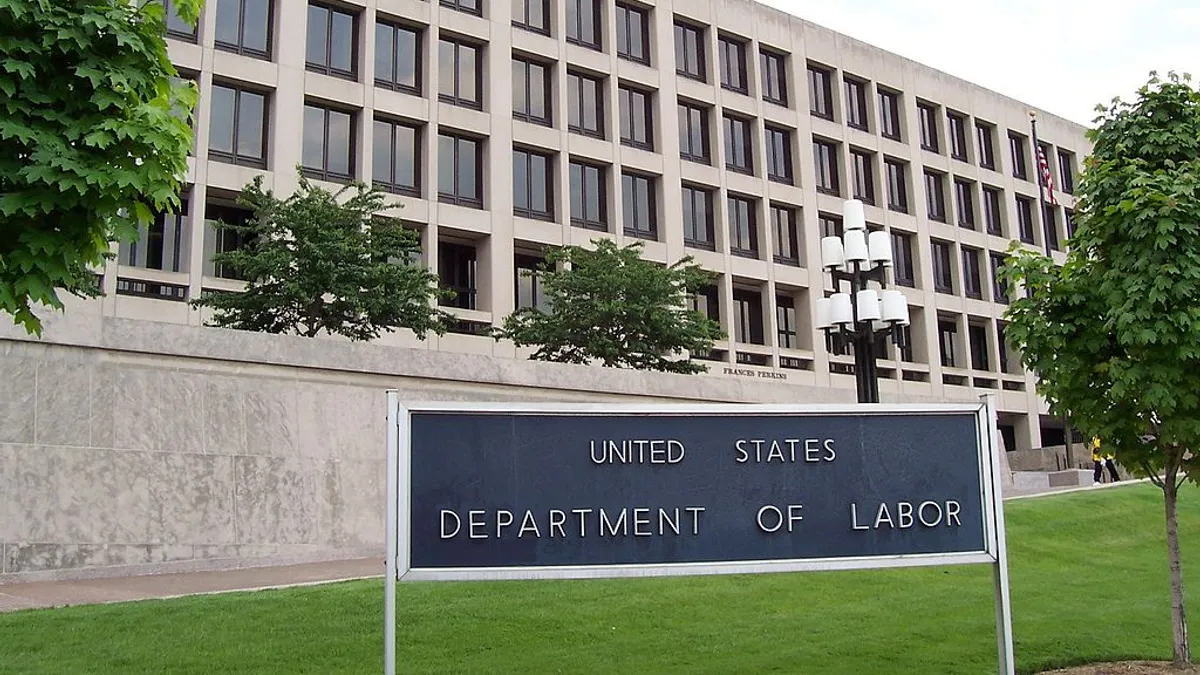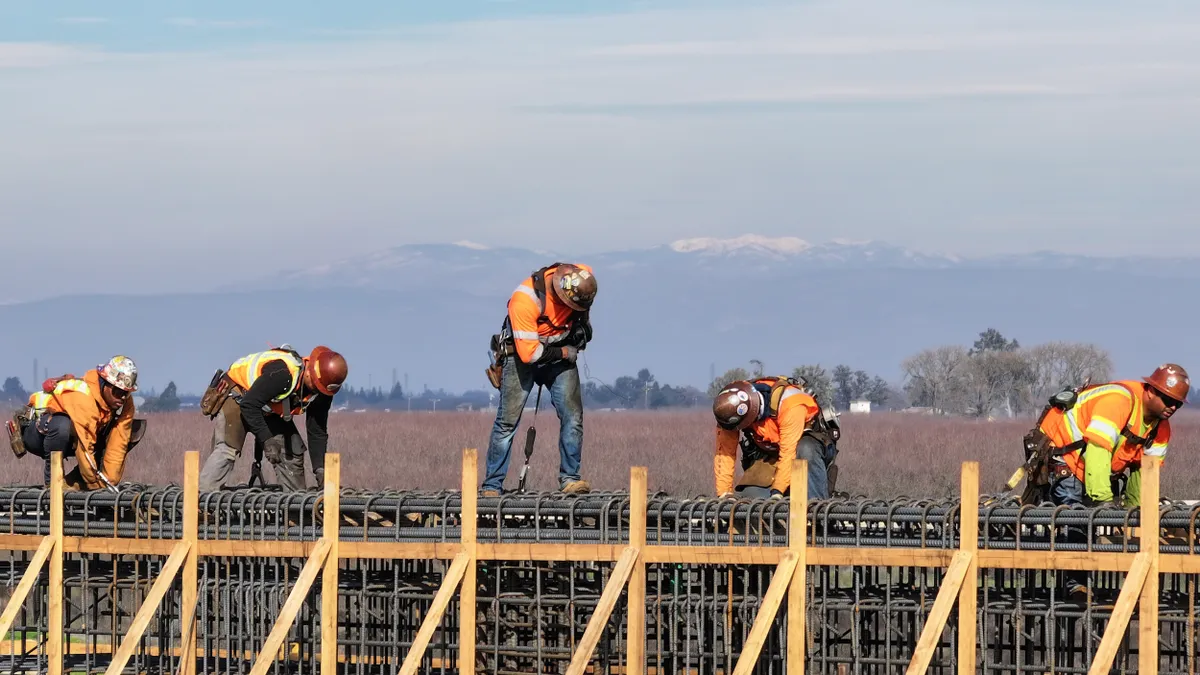Dive Brief:
- A federal judge in New York has vacated most of a joint employer final rule that the U.S. Department of Labor issued earlier this year declaring it "arbitrary and capricious" and ruling that it is in conflict with the Fair Labor Standards Act (FLSA). The DOL's final rule established new guidance for determining joint-employer status, including a "four-factor balancing test."
- In his decision, U.S. District Judge Gregory Woods said that the DOL did not provide an adequate justification for deviating from the FLSA's existing "broad definitions" of an employer, which determine joint and several liability, and that the final rule is in violation of the Administrative Procedure Act. Woods also found that the final rule creates burdensome administrative costs for the 18 states that were plaintiffs in the lawsuit.
- Woods said that while the ruling set aside the DOL's test to determine "vertical" joint employer liability, the agency's revisions to the definition of "horizontal" joint employment will remain in effect. Vertical employment exists when an employee has one employer, like a subcontractor, but is also economically dependent on another entity involved in the work, like a general contractor. Horizontal joint employment exists when an employee has an employment relationship with two or more "sufficiently associated" employers.
Dive Insight:
Woods' decision in part focused on the four-factor test included in the final rule. The test considers whether the potential joint employer:
- Hires or fires the employee (not whether the employer has the authority to hire or fire).
- Supervises and controls the employee’s work schedule or conditions of employment to a substantial degree.
- Determines the employee’s rate and method of payment.
- Maintains the employee’s employment records.
The weight given to each factor varies according to circumstance, and the maintenance of employee records alone does not constitute a joint-employer relationship.
In his ruling, Woods said this control-based test is "impermissibly narrow."
The Associated Builders and Contractors (ABC) submitted to the court a copy of its 2019 comments in support of the rule for consideration before Woods issued his Sept. 8 ruling. The ABC said that the four-factor test provides clarity for construction employers and that it recognizes that there are many types of employers on a project site exhibiting varying degrees of control over the work that "indirectly impacts many employees' terms and conditions of employment without in any legitimate sense converting the independent employers of such employees into 'joint employers.'"
On a construction project where there is a general contractor directing the work, to a certain extent, of subcontractors, there is often some crossover of supervision and instruction, leaving the question of which companies are actually in control open to interpretation.
In response to the court's ruling, Ben Brubeck, ABC vice president of regulatory, labor and state affairs, said the judge "misapplied precedent in failing to defer to the DOL’s guidance and refusing to uphold the new rule in its entirety.
"We believe the judge got it wrong on both procedural and substantive grounds, strongly suggesting the need for an appeal," he said.
Other areas of the government have also had to deal with the issue of joint-employer situations.
In February the National Labor Relations Board issued its final joint-employer rule, which confers joint-employer status on companies if they share or co-control "essential terms and conditions of employment," which include wages, benefits, work hours, hiring, termination, discipline, supervision and direction.
OSHA has also addressed joint employment through its multi-employer citation policy. Under this directive, a company can be considered an employer for purposes of liability if it exercises "broad control" over other companies and their employees.














